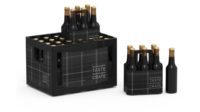Industry Q&A: Extrusion Equipment
Blown Film Technology Continues to Focus on Sustainability and Cost Savings
Sebastian Huennefeld, technical sales manager of extrusion systems at Windmoeller & Hoelscher, provides his well-honed insight on saving time and money in the blown film sector.

Q: Are there any developing trends/technologies you are noticing in the blown film sector?
A: The age-old trend is that companies are always looking for ways to save money and improve on sustainability. This has led to discussions, with almost all customers, about 5- vs. 3-layer films for their polyolefin-dedicated lines. Down gauging to thinner functional layers can save money by reducing the amount of expensive resins needed to produce an equally good or better structure, while still producing at maximum outputs.
We also seem to be talking a lot about calcium-carbonate-rich structures for breathable or non-breathable films produced on blown lines running in conjunction with an inline MDO unit. Given the superior mechanical properties which can be achieved, this process could really take off in the near future.
Q: Are there any new developments that your company has in store or launched recently?
A: Well, let me put it this way … anybody who has ever been involved in upside down blown water quench technology knows that adjusting the blow up ratio has been the major challenge to this technology. Therefore, I can only recommend visiting the W&H in-house expo in Germany this June.
Another recent development that will be shown at the expo is our new compact flexographic press for narrow to mid-web jobs – the Miraflex S. It offers very quick changeovers, 3.5-minute wash-ups, the flexibility to run repeats of 10 feet to 31.5 inches and as little as 75-foot substrate from unwind to rewind.
Q: How has business been for W&H this year?
A: We’re doing really well. Our press business has been constantly strong since we opened shop in North America decades ago. Our extrusion business has been experiencing one record year after another since the “end of the world” economic crisis in 2010. Our form-fill-seal business has picked up with last year’s launch of palletizing and stretch hooder technologies from W&H to complement our Topas FFS lines, meaning customers get the complete line from just supplier.
Q: What has been the most common request from customers lately?
A: Polyolefin-dedicated blown film lines are still the bread-and-butter business for W&H in North America and the rest of the world, although the amount of 5-layer non-barrier lines with precisely customized die cuts is increasing vastly. Additionally, customers are interested in our new Filmatic PS cast stretch winder that can wind these very difficult-to-wind structures with widths of up to 177 inches at speeds of up to 2,600 feet per minute. This technology has made a serious impact on the cast stretch market.
Q: Do you feel there are any improvements that need to be made in the blown film sector? If so, please elaborate.
A: Considering where blown film technology is today, I am not really expecting completely unforeseen technological breakthroughs. So when I think of improvements in this sector, I think of all these thousands of blown lines that are out there since the 70’s or 80’s. Retrofitting or replacing these might become the biggest sector of improvement.
Windmoeller & Hoelscher
(401) 334-9502
www.whcorp.com
Looking for a reprint of this article?
From high-res PDFs to custom plaques, order your copy today!






